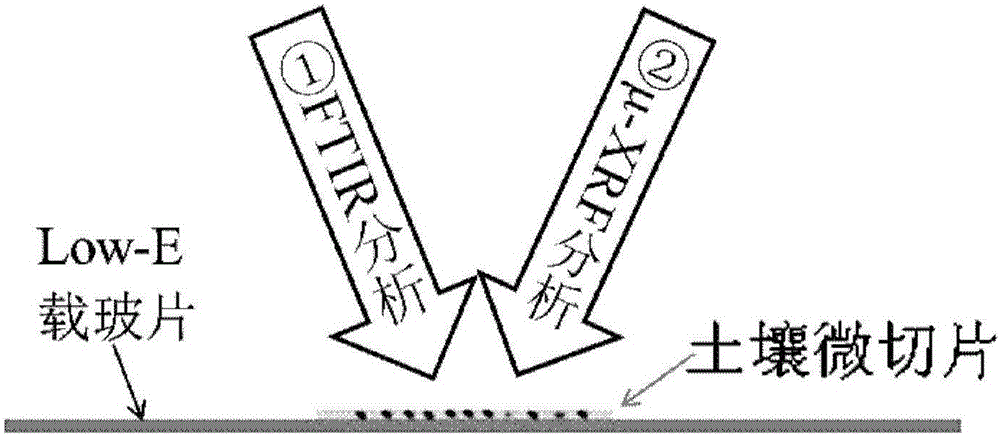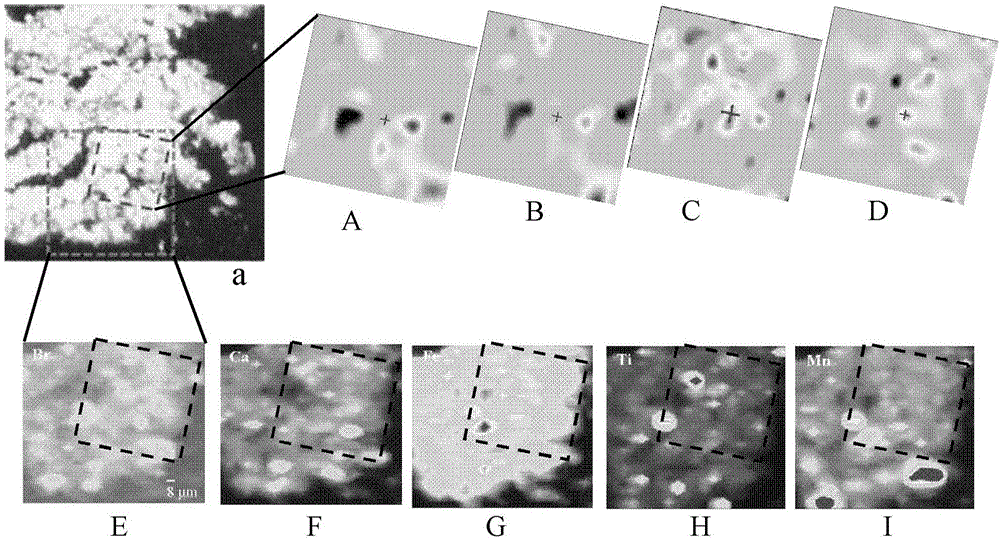An in situ visual analysis method for organic brominated compounds in soil
An analytical method and compound technology, applied in the field of organic pollutant analytical chemistry, can solve the problems of soil composition and structure disturbance and damage, and it is difficult to reflect the real distribution of pollutants in soil.
- Summary
- Abstract
- Description
- Claims
- Application Information
AI Technical Summary
Problems solved by technology
Method used
Image
Examples
Embodiment 1
[0033] 1) Soil sample preparation:
[0034] Decabromodiphenyl ether (BDE-209) contaminates brown soil with a pollution concentration of 50mg Br / kg; after the soil is evenly mixed, add sterile water to the field water holding capacity, and prepare for slicing after overnight.
[0035] Select suitable size and stable microaggregates, use Microm HM525 cryostat, directly slice the microaggregates with a thickness of 2-15μm, and transfer them to Low-glass slides for spectroscopic analysis.
[0036] 2) FTIR microscopic imaging analysis:
[0037] like figure 1 As shown, using the Taiwan Light Source (NSRRC) 14A1 beamline to directly analyze BDE-209 polluted brown soil microsection samples, the analysis step size is 5-30μm, and the resolution is 1-4cm -1 , scanned 32-128 times; the imaging data was analyzed by Omnic 8.0 to obtain the organic carbon aromatic group (1613cm -1 ), carboxyl (1730cm -1 ), fat base (2922cm -1 ) functional groups and clay minerals (the main clay mineral ...
Embodiment 2
[0042] 1) Soil sample preparation:
[0043] Tetrabromobisphenol A (TBBPA) polluted brown soil: the pollution concentration is 50mg Br / kg; after the soil is evenly mixed, add sterile water to the field water capacity, and after overnight, prepare for slicing. The soil microsection preparation method is the same as Example 1.
[0044] 2) FTIR microscopic imaging analysis:
[0045] The main analytical instruments and parameters are the same as in Example 1. The imaging data was analyzed by Omnic 8.0 to obtain the organic carbon aromatic group (1613cm -1 ), carboxyl (1730cm -1 ), fat base (2922cm -1 ) functional groups and clay minerals (the main clay mineral in brown soil is illite, and its O-H position is 3621cm -1 ) on micro-section distribution map ( Figure 4 A, B, C, D shown).
[0046] 3) μ-XRF microscopic imaging analysis:
[0047] Using the Shanghai Light Source (SSRF) 15U1 beamline to analyze the micro-area distribution of TBBPA (Br as a tracer element) and other...
PUM
| Property | Measurement | Unit |
|---|---|---|
| particle diameter | aaaaa | aaaaa |
| thickness | aaaaa | aaaaa |
Abstract
Description
Claims
Application Information
 Login to View More
Login to View More - R&D
- Intellectual Property
- Life Sciences
- Materials
- Tech Scout
- Unparalleled Data Quality
- Higher Quality Content
- 60% Fewer Hallucinations
Browse by: Latest US Patents, China's latest patents, Technical Efficacy Thesaurus, Application Domain, Technology Topic, Popular Technical Reports.
© 2025 PatSnap. All rights reserved.Legal|Privacy policy|Modern Slavery Act Transparency Statement|Sitemap|About US| Contact US: help@patsnap.com



